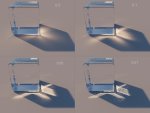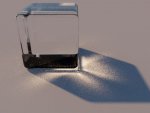To be able to add a bake-texture tag, they needed to be:
'made editable'
Here's a before and after speed test. Will introduce some more lights to test further.
Regards
Andy
What renderer are you using?
To be able to add a bake-texture tag, they needed to be:
'made editable'
Here's a before and after speed test. Will introduce some more lights to test further.
Regards
Andy
Should you also disable the Camera light?
Also when using it with those free textures and then changing back to the old material node with the same textures (abandoning the whole specular & roughness stuff) I do not see much difference.
I think there is something else I'm missing.
It nearly worked this time:
Thanks for confirming my suspicion :smile:There's very little a PBR shader can do that the material shader can't

There's very little a PBR shader can do that the material shader can't, but PBR shaders map really well into game development work flows
PBR materials are meant to be transferable, compatible, consistent etc., in and out of C3D and other apps using it
While playing with the reintroduced caustics I noticed an old problem:
Reflections of lights in glass bodies are not consistent.
When rendering a scene with a mesh light vs an area light, the mesh light gets reflected and the area light not.
I would understand if non physical lights like point or distant show no reflections, but an area light with visibility turned on should not render differently than a mesh light (assuming the rendering of emissive bodies being the realistic way).
I would have preferred, though, the possibility to use normals (real render geometry) and bumps at the same time.
I've fixed that problem. The area light samples got clamped although you've turned off clamping.




Also the new PBR materials work well with caustics, the setup is super easy and the result looks just right:
View attachment 32635
